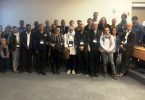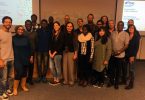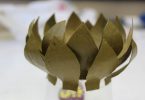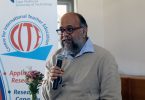Multilingual glossaries can play an important role in addressing transformation and decolonisation of the inherited post-apartheid education system.
This is according to Muhammad Nakhooda, a senior lecturer and researcher in the Department of Biotechnology, who conducted a bold language project with the aim of addressing diversity and access in the Biotechnology classroom.
Speaking at the recent RITAL Conference, themed “Transitioning In and Transitioning Out: The Context of Transforming the HE landscape,” Nakhooda says transformation is sought at all levels of education and various measures have been conceived and implemented to provide access to quality education.
However, with English being the language of instruction at the majority of higher education institutions in South Africa, Nakhooda says “an essential aspect of addressing this transformation and decolonisation lies in providing conceptual access to course content for English Second Language learners.”
“Research has shown that non-English speaking students that study in English often struggle to meet their performance capabilities of their first language,” he says.
“This is particularly relevant to the sciences, as many students struggle with conceptual understanding of scientific theory in English.”
In order to gauge the language requirements in the Biotechnology classroom, Nakhooda tasked a group of second year students to complete an assignment in English and then translate it into their home language. The assignment focused on taxonomic classifications, which are basic principles students need to grasp in order to further develop their understanding of Microbiology.
On evaluation of the assignment, Nakhooda found that through group content engagement in their home language, many students benefitted from the exercise, noting that it effectively enhanced communication and helped them to gain a better understanding of the science concepts. Furthermore, the assignment highlighted key challenges, as students struggled to find appropriate words (in their home language) for the English equivalent that describe most science terms and concepts. Nevertheless, it is well known that indigenous languages convey rich imagery to enhance student understanding in a manner that isn’t available in English. Many students rely on this imagery to grasp difficult concepts in science.
Nakhooda used the information from the assignment and, along with students and the Language Unit at CPUT, compiled an Afrikaans and isiXhosa science glossary, and is now looking at a similar French version, to assist the significant cohort of French-speaking students at the institution.
“If we can design multilingual glossaries to address language access and bridge the learning gap, then this can potentially be a powerful tool to assist lecturers and students in improving teaching and learning at Universities.”
Nakhooda is currently exploring how the science glossaries are being used in the classroom and to quantify any impact it will have on teaching and learning.
*The intervention was made possible, thanks to RITAL funding.







